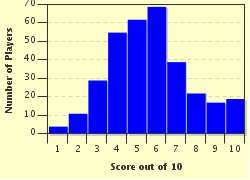Quiz Answer Key and Fun Facts
1. What is the name of this butterfly which is native to Europe, North Africa, and parts of Asia?
2. This blue insect can be seen in most parts of Europe, but what is it called?
3. This is an image of a blue starfish, but can you tell me where its eyes can be located?
4. Not only can this amazing fish be seen in the wild along coral reefs, but is also a favourite in home aquariums. What is it called?
5. Where is the native habitat of the blue poison dart frog?
6. The flowers of blue hydrangea mean that the soil is what: acid or alkaline?
7. When it was discovered in 1995 in Madagascar, what was the world's largest sapphire called?
8. "You ought to have seen what I saw on my way
To the village, through Mortenson's pasture today.
Blueberries as big as the end of your thumb,
Real sky-blue, and heavy, and ready to drum."
Which American wrote the poem "Blueberries"?
9. Lactarius indigo is the Latin name for this mushroom. What is its more common name?
10. Which birds lay the blue eggs shown in the image?
Source: Author
Plodd
This quiz was reviewed by FunTrivia editor
Pagiedamon before going online.
Any errors found in FunTrivia content are routinely corrected through our feedback system.


